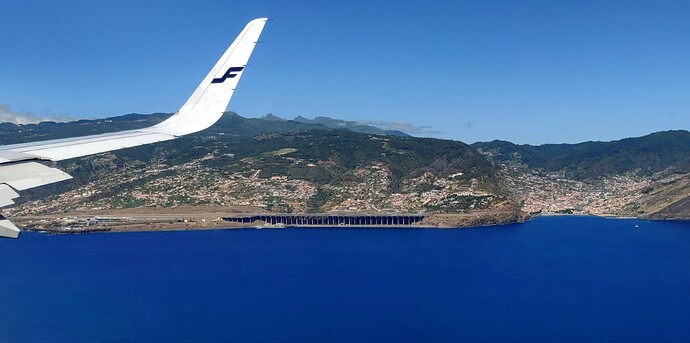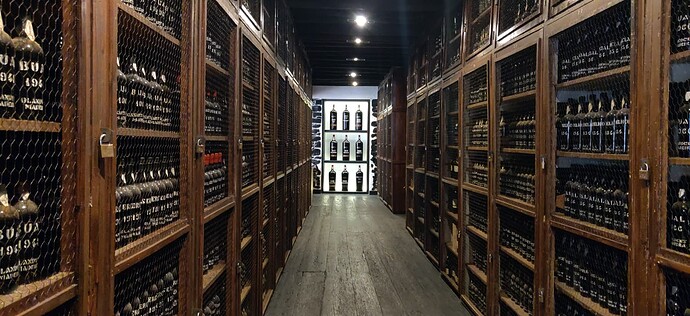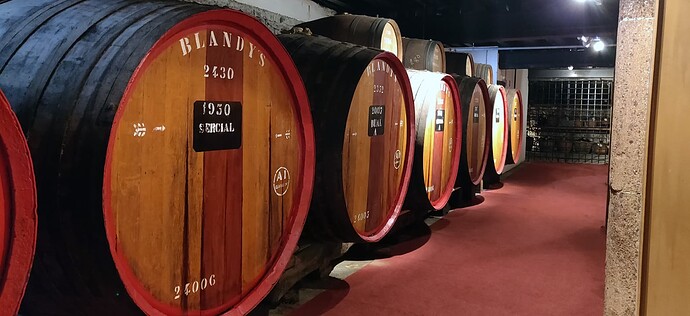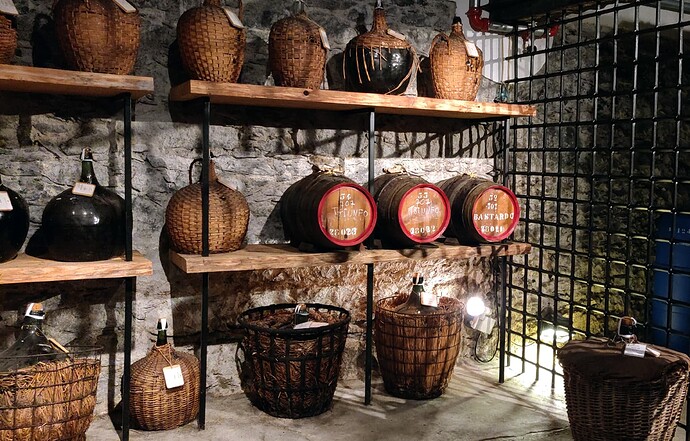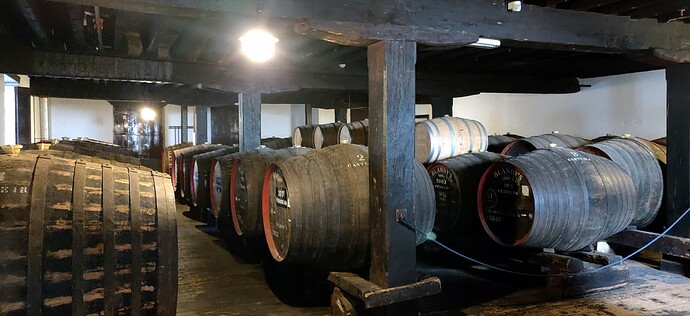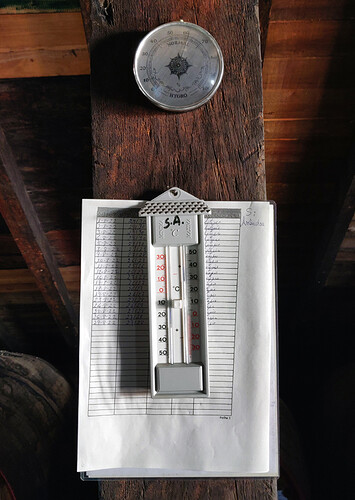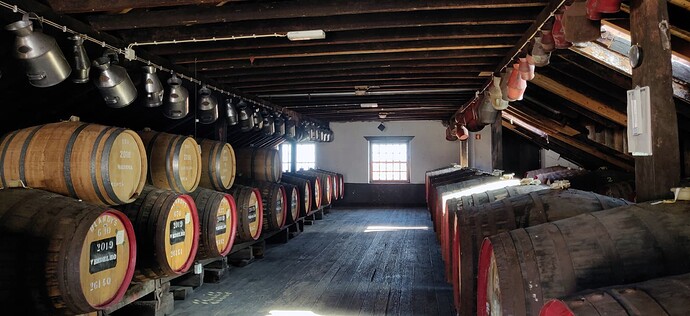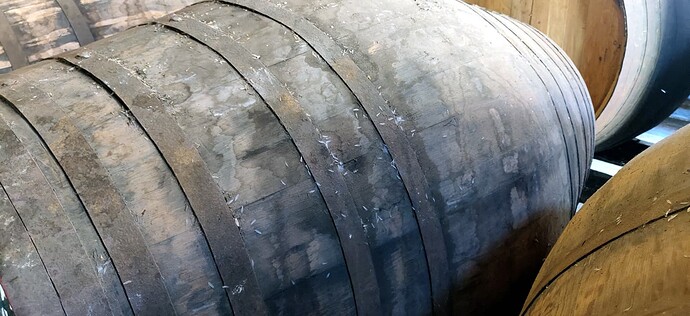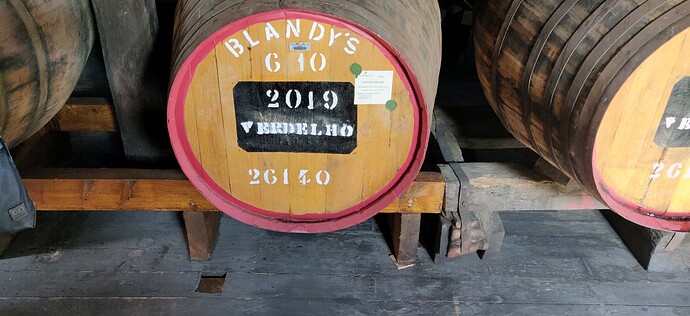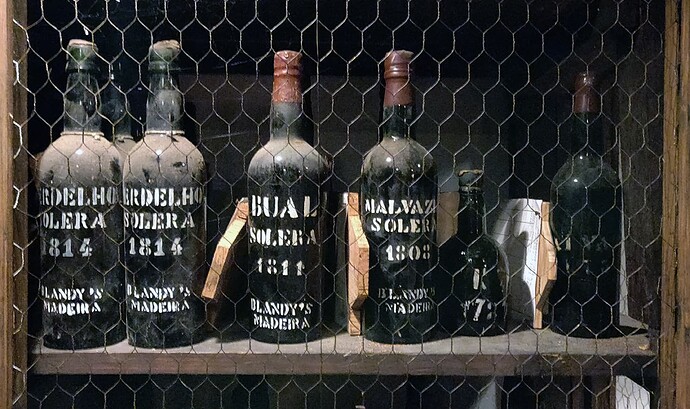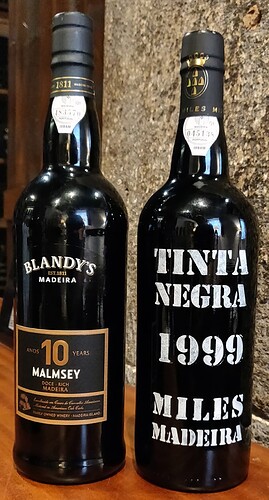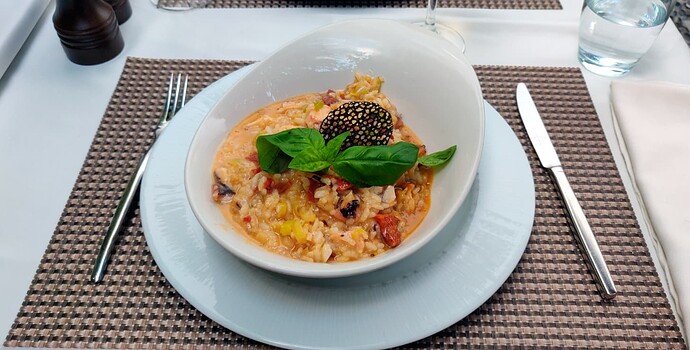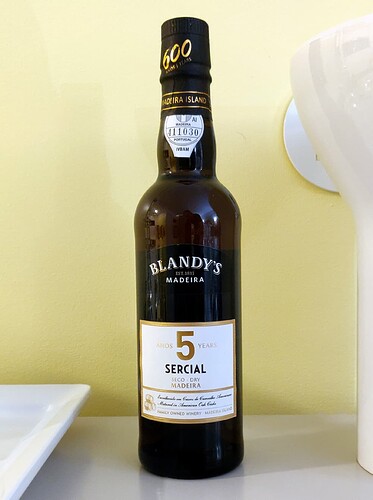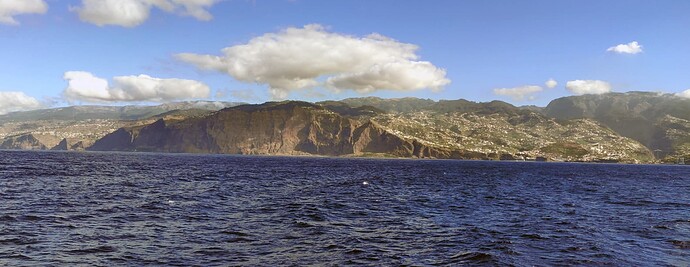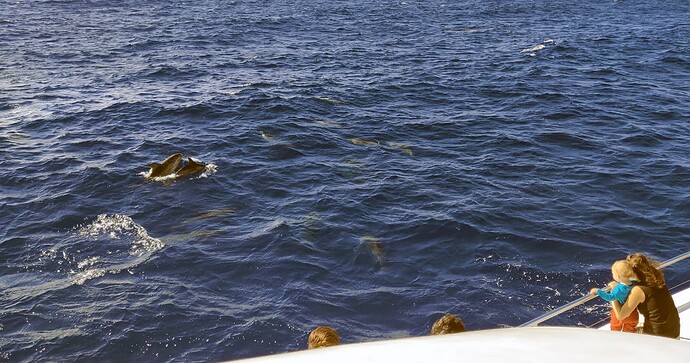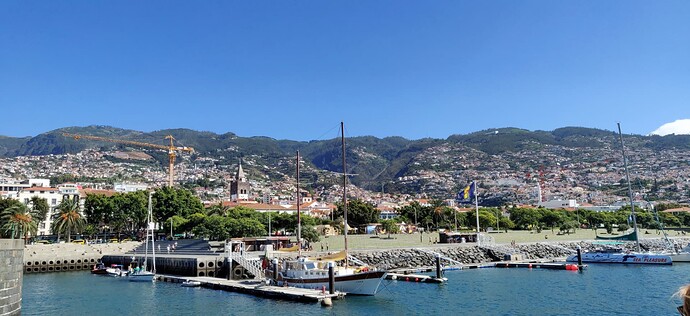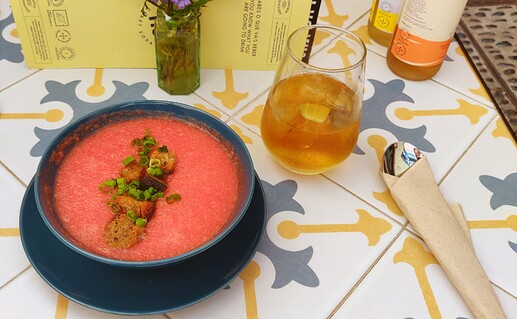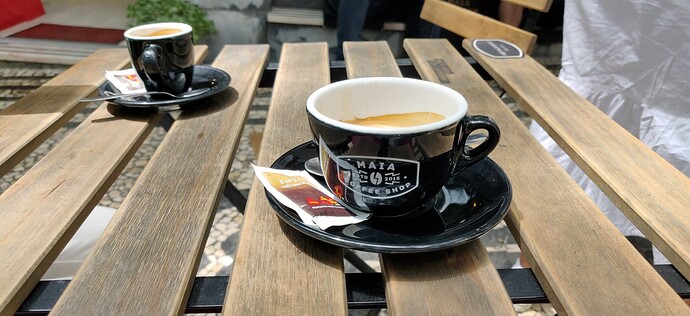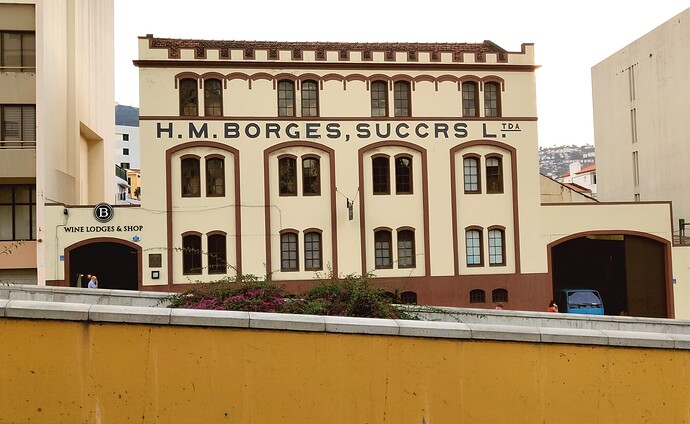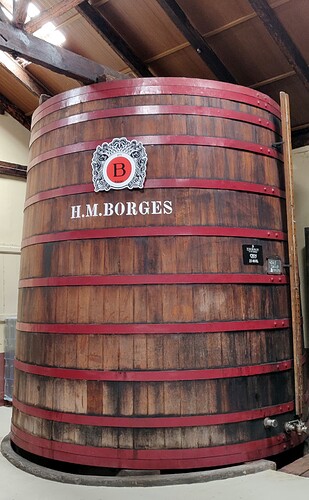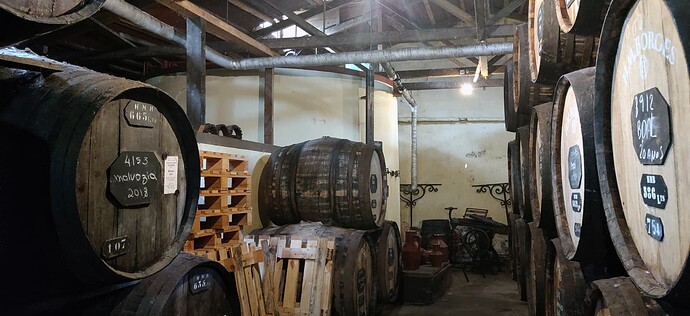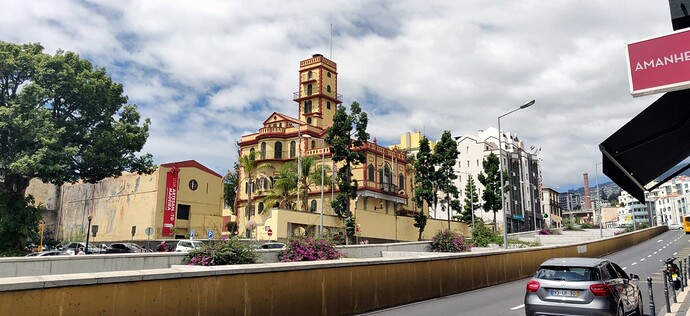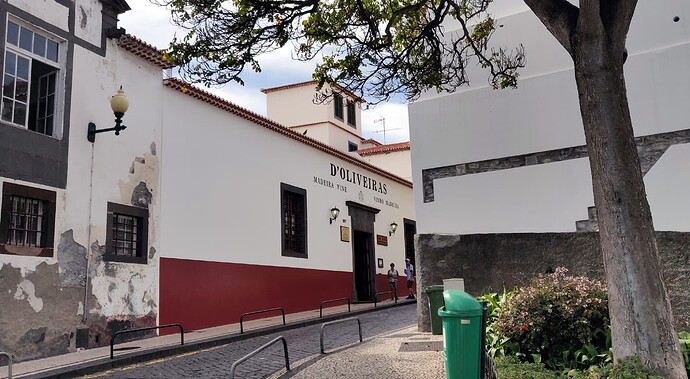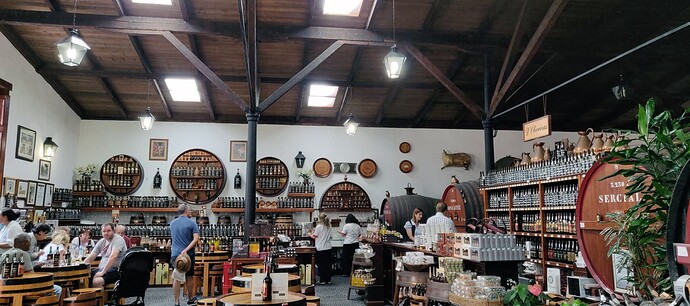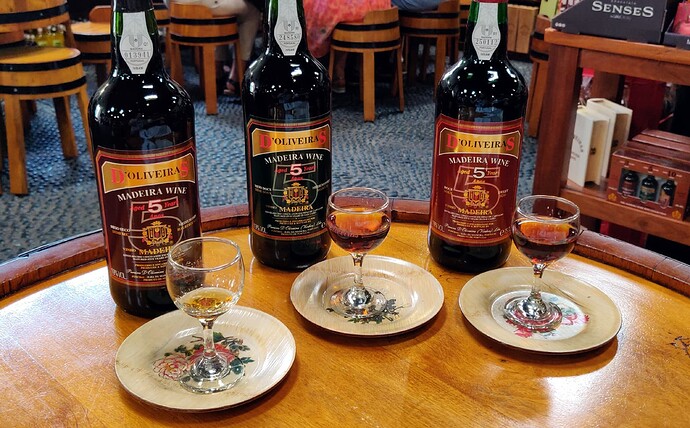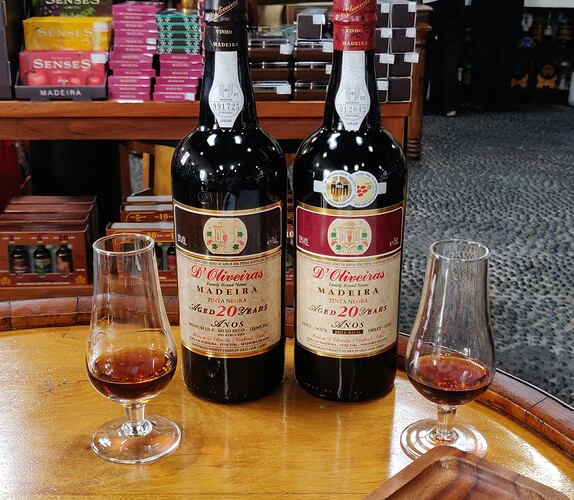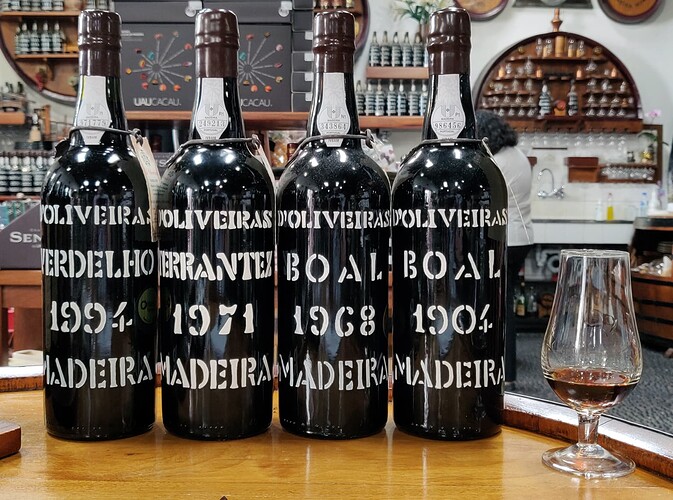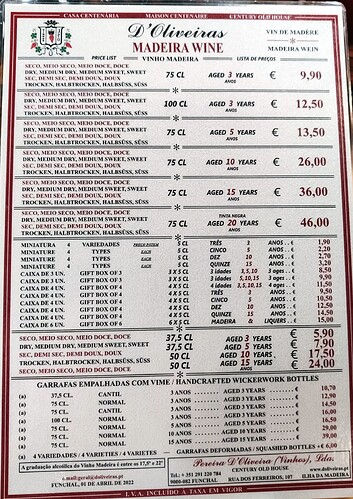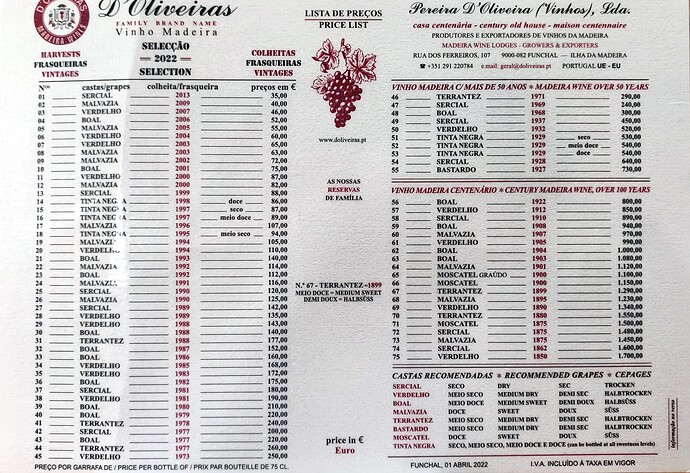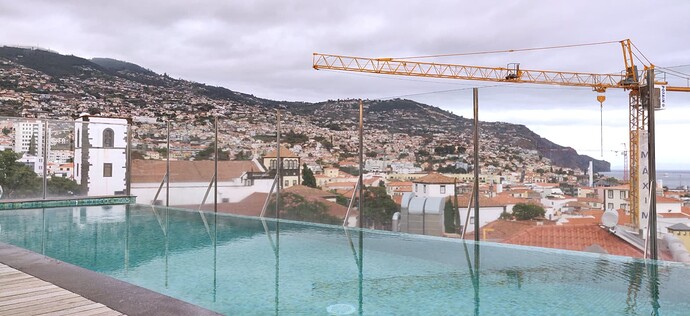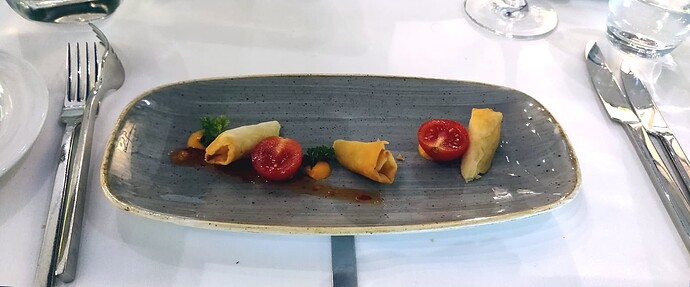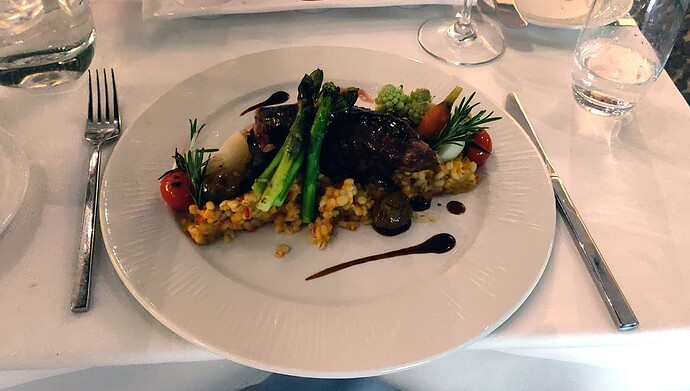Madeira has been on my bucket list for quite some time now and finally, last August-September, we managed to visit the island. We spent a nice week there and I managed to taste some 70-ish wines during the visit. I thought maybe these notes would be of some interest - and of course comments from people who have visited the island are welcomed, too!
We stayed at a lovely hotel that was located pretty much at the center of Funchal, basically right next door to Oliveiras! Nothing to complain there. The weather, too, was pretty much perfect - even when the top parts of the island were cloudy or even rainy, Funchal remained dry (yet moderately humid) throughout the week and although it wasn’t sunny all the time, we still had lots of sun and the temperatures were just very pleasant from midday to midnight, hovering between 15 and 25 degrees Celsius (60 to 75 Fahrenheit).
Day 1:
Arriving to Madeira - there’s the airstrip we’re about to land!
After we had dropped our baggages at our hotel, we headed for Madeira Wine Company / Blandy’s Wine Lodge. There we took a tour around the oldest parts of the winery, finishing off with a small tasting of two MWC Madeiras.
The Madeira Wine Company tasting room:
Some older casks laying on the canteiros at the lowest and coolest levels of the adega, ie. at the ground level. What surprised us was how even here the temperature was surprisingly high, ie. more or less at the room temperature. These older casks also still had lot numbers according to the old Madeirense system, but I can’t remember the logic behind it (the system was used to keep the vintages of the wines as a secret in the case pirates managed to get their hands on casks of Madeira). Nowadays they do mark the vintages and as well, mind you.
This little cavernous part was the coolest part of the adega used for the oldest unbottled lots at MWC. The wines that could be still aged further, were kept in smaller oak casks, whereas those bottles who were as ready as they’ll ever be, were kept in demijohns, waiting to be bottled:
This is how the canteiros higher up looked like. There were three or four stories and both the temperature and the humidity went up with the elevation. It was starting to feel a little bit like a steam room already at the second floor!
The temperature was at around 29°C (85°F) and the humidity 67% in the upper parts of the canteiro system:
This is how it looked at the top floor of the canteiro system. It was getting so hot and humid there that it wasn’t really that comfortable for a Finn to be there! ![]()
We were also told us that contrary to what one would think, it is actually more expensive to have the centuries-old adega than to tear it down and build a new winery! Just the upkeep alone is very expensive, as they try their best to keep it how it always has been, but that means constructing stuff like fire extinguishes, smoke detectors and other safety measures is very expensive. After I asked about small insect wings they seemed to have everywhere in the top floors, they told us how they also had problems with termites, which exacerbates the upkeep trouble and increases costs:
When we asked about the small holes they had in the floors, we were told that they try to move the wine without any mechanical means, if possible. As moving the barrels around the cramped adega, the wines are moved with pumps and hoses from one floor (and cask) to another, mainly with the help of gravity:
For the last portion of the tour, we got to see the small library cellar of MWC, where they kept their oldest bottles. There were probably a few hundred of bottles left (mainly from the early 1900’s to mid-1850’s) and these were the oldest bottles there - a few early 1800’s Soleras (don’t have any idea when they were bottled) and two bottles from the 1700’s:
Then, finally, a tasting of two Madeiras:
-
NV Blandy's Madeira Malmsey 10 Years Old - Portugal, Madeira (30.8.2022)
100% Malvasia São Jorge. The grapes are first macerated with the skins, after which the fermentation starts in temperature controlled tanks. After 48 hours of fermentation, the must is rectified to approx. 20% ABV with 96% ABV grape spirit to halt the fermentation. The fortified wine is transferred to old oak casks which are moved to age in Canteiros, ie. in warm warehouses in which the wines age in casks that are never topped up. This wine is an indicative blend of multiple vintages, older and younger, with the aim of recreating a wine that has been aged for approximately 10 years in casks. 19% alcohol, 123 g/l residual sugar and approx. 6,5 g/l acidity.
Clear and quite pale nutty-brown color - looks somewhat lighter than what I remembered. Sweet, oxidative aromas of caramel and maple syrup, some perfumed notes of dried flowers, a little bit of treacle, light smoky nuances, a hint of nutty rancio, a touch of dried figs and a whiff of cappuccino. The wine feels sweet and oily but also relatively fresh on the palate with a medium body and quite intense flavors of raisins and syrupy molasses, some oxidative notes of caramel, a little bit of dried figs, light pruney tones, a hint of nuttiness and a touch of Christmas spices. The alcohol lends a bit of warmth while the rather high acidity keeps the wine fresh and quite zippy. The finish is sweet, long and slightly syrupy with flavors of caramel, some raisiny tones, a little bit of burnt sugar bitterness, light notes of dried figs, a hint of floral lift and a touch of lemony tang.
A lovely, tasty and harmonious Malmsey. Perhaps on the rich and syrupy end of the spectrum, rather than on the sweet-yet-brisk style of Malmsey where the sweetness is set off by the bracing acidity some Malmsey Madeiras can have. Definitely a dessert wine, but as is typical of the genre, the wine is wonderfully fresh, balanced and structured as well. Fine stuff.
(90 points) -
1999 Miles Madeira Tinta Negra - Portugal, Madeira (30.8.2022)
100% Tinta Negra made with fruit sourced from vineyards in Câmara de Lobos, west from Funchal. After approximately 48 hours of fermentation, the must is rectified to approx. 20% ABV with 96% ABV grape spirit to halt the fermentation. The fortified wine is transferred to old oak casks which are moved to age in Canteiros, ie. in warm warehouses in which the wines age in casks that are never topped up. The wine is aged for 20 years, first in the warehouses of Madeira Wine Company in Funchal, then in cellars in Caniçal. 20% alcohol, 130 g/l residual sugar, 8,73 g/l acidity, VA 0,66 g/l and pH 3,27. Total production 1317 bottles, 19 magnums, 16 double magnums and two 18-liter Solomon bottles.
Quite deep syrupy-brown color with a reddish hue. The nose feels somewhat restrained with brooding, sweet-toned aromas of raisins, some figgy tones, a little bit of dried dark fruits, light old woody tones and a hint of savory, earthy spice. The wine is sweet, silky smooth and somewhat concentrated on the palate with a moderately full body and intense flavors of syrupy richness counterpointed by modest burnt sugar bitterness, some sharp lemony tones, a little bit of dried figs and raisiny dark fruit, light peppery nuances, a sweet hint of cloudberry jam and a touch of bruised green apple. The rather brisk and racy acidity lends the wine great sense of freshness and structure. The finish is long, sweet and somewhat oxidative with flavors of savory spices and tart lemony citrus fruits, some caramel tones, a little bit of smoke, light syrupy nuances, a hint of tobacco and a touch of salted nuts.
A bright, zippy and lively Frasqueira that might not be made with the noble varieties, yet shows great sense of freshness and harmony - which is something Tinta Negra does not always show. Although the wine might be lacking a bit in complexity - as it is a Tinta Negra and quite young for a Frasqueira - there's lots of stuffing here, ranging from complex fruity notes to sweet-yet-savory oxidative nuances and tart, acid-driven notes of lemons and green apples. Delightful and thoroughly enjoyable stuff.
(92 points)
After the tour we grabbed a small bottle of Blandy’s Madeira from the lodge store to have something to sip on at the hotel. Then we went to a nearby restaurant, because it was high time to have something for a dinner - I had a seafood risotto. Not really up to Italian standards, but at least it drove the hunger away:
They didn’t have anything interesting to offer by the glass, so we just went for a half bottle of some random Douro Branco, which was the same stuff they had by the glass. Cue in disappointment.
-
NV Castello de Numão Douro Branco - Portugal, Douro (30.8.2022)
A blend of Viosinho, Gouveio and Moscatel Galego. From a half bottle that didn't seem to have any indication of vintage. 13% alcohol.
Somewhat evolved pale golden yellow color. Sweet, fragrant and rather perfumed nose with aromas of exotic fruits, some musky floral tones typical of Muscat, a little bit of peach and a hint of guava. The wine is dry, medium-bodied and quite crisp on the palate. However, the taste is odd - the wine starts off as ripe, tropical and even somewhat sweetly-fruited, then suddenly turns into quite dull and musty, making me wonder if the wine is corked, then flavors of juicy peaches and some floral notes of Muscat emerge. Really odd. The wine is high in acidity, lending good sense of freshness and focus to the wine. The finish is dry and quite crisp with flavors of peach, some guava and other exotic fruits, a little bit of perfumed floral character and a dull hint of dusty earth.
A simple, exotic and floral little white that suffered from some weird, musty notes that made me think at first that the wine was corked. However, the wine didn't seem to get worse with air and aromatically it was quite sound - normally TCA mutes the wine, but there wasn't really anything muted here. Just some weird, musty flavors on the midpalate. I guess this is just cheap wine made with third-grade fruit or something. A decent, but very forgettable effort. Wasn't expensive at just 12€ for a half bottle in a restaurant, but hard to say if it was really worth it.
(79 points)
After the small dinner we just walked around for a bit before heading back to our hotel. Took a sip of the Blandy’s Madeira for a nightcap:
-
NV Blandy's Madeira Sercial 5 Years Old - Portugal, Madeira (30.8.2022)
100% Sercial made with purchased fruit sourced from vineyardsin Porto Moniz, Seixal and Câmara de Lobos. The grapes fermented spontaneously starts in temperature controlled stainless steel tanks. After 5-6 days of fermentation, the must is rectified to approx. 20% ABV with 96% ABV grape spirit to halt the fermentation. The fortified wine is transferred to old American oak casks which are moved to age in Canteiros, ie. in warm warehouses in which the wines age in casks that are never topped up. This wine is an indicative blend of multiple vintages, older and younger, with the aim of recreating a wine that has been aged for approximately 5 years in casks. Bottled fined and lightly filtered. 19% alcohol, approx. 50 g/l residual sugar and approx. 6 g/l acidity.
Luminous golden yellow color with a nutty-brown hue. The nose is somewhat oxidative with aromas of chopped walnuts, some bruised Granny Smith apple, a little bit of lemony citrus fruits, light grain whisky tones, a hint of caramel and a sharp touch of rancio. The wine is relatively mellow and gentle for a Sercial with some alcohol warmth, a medium body and medium-sweet flavors of orange, some oxidative notes of caramel and nutty rancio, a little bit of lemony citrus fruit, light bruised apple tones and a sweeter hint of dried fruits. Bright high acidity. The overall feel is harmonious, but also quite linear for a Madeira. The finish is quite long with medium-dry flavors of lemony citrus fruits, some caramel, a little bit of nutty rancio and roasted walnuts, light sharp notes of green apples, a hint of orange and a touch of bruised apple.
An enjoyably fresh and complex but also a bit linear and mellow Sercial. Several sources say that the sweeter varieties work much better with younger Madeiras and drier styles (Sercial, Verdelho, Terrantez) start to really shine only with age (ie. +20 yo blends and Frasqueiras). The more I taste these younger Madeiras, the more I agree - while I do enjoy the freshness and zip Sercials normally show, these young wines come across as more linear and somewhat simple than the sweeter versions, which pack a bit more complexity already in their youth. Especially Sercial seems to develop more complexity only as it becomes more concentrated with extended aging. This was pretty lovely, but nothing special enough to make me seek it out specifically - at this age level (ie. price point) I'd go for the sweeter styles; if I wanted a Sercial, I'd pick something with more age. And do note that the wine does not develop any further in the bottle, so any further cellaring won't improve the wine from here - although the wine won't suffer from any cellaring either. Drink or keep. Priced according to its quality at 9,35€ for a half bottle.
(88 points)
Posted from CellarTracker
